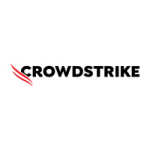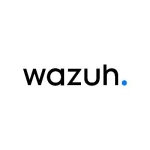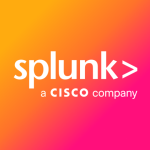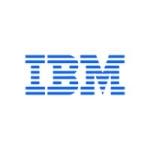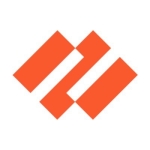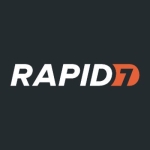Securonix provides feedback from integrations with third parties so that it is always up to date regarding security events that occur daily.
It has helped a lot because previously we did not have as much control over the procedures or things that the company's users did. With Securonix, we have been able to monitor the activities of both internal and external users in the company.
Securonix has published a lot of information regarding how to use the platform. They have a lot of information online that has helped us add contextual information to security events. In the event of a security breach or a risk, it helps us monitor things. So far, with the solution in place, we have not witnessed any attacks, but it has helped us to monitor possible events that, if not taken into account, could be security breaches. It has helped us to mitigate potential gaps.
With this solution, we have saved hours in case management. It has helped us detect things faster and the integration with third-party sources has given us the ability to correlate and act on internal and external events, such as malicious attacks or malicious sites. We have improved in our response to certain incidents and types of browsing thanks to external lists that Securonix has provided us with. We can automatically detect threats.
Another benefit has been the ability to integrate practically all our specialists from different areas, including Windows, security, virtualization, et cetera, to respond with better quality. It has improved the efficiency of analysis.
It has also helped with data loss events in a certain way, through integration with our email accounts. In an event of data loss, the loss for our organization would be incalculable.
We used McAfee before. The person who was in charge left the company just when Securonix came in and that is when I started working here.
One of the main differences is having service through the cloud. Before Securonix, we had the service locally. Now, the service is processed in the cloud and when a case is generated on the platform, they have always been willing to help us.
Securonix is in the cloud. We have a virtual machine that stores certain platform configuration information, and since it is in the cloud, we can manage the platform from anywhere. The cloud-native platform helps minimize infrastructure management. Having everything integrated into one place makes things much easier for us.
I was only involved a little in the implementation of Securonix, but from what I heard, their team was helping our entire company, day and night, to get the implementation out as soon as possible. There may have been some problems in integration, but support cases were created and their team was always there with updates and new ways to connect our sources with their platform. Overall, it was not that complicated.
On our side, we had specialists involved from each department that wanted to be integrated with the platform, such as Windows, networking, security, et cetera. The Securonix staff was always present.
Securonix has provided us with a consultant here in Colombia. We are in contact regarding configuration of the platform to rule out possible false positives and help us focus on events that we must take into account.
It took us four months to incorporate all the sources.
There are no maintenance requirements on our part. They are constantly notifying us of updates and, before making changes, they let us know if there are going to be any interruptions in the service.
Securonix seems to be a good solution that has met all our requirements.
If you want to have a more centralized solution to improve the performance of case and incident analysis and management, Securonix seems like a very good option.
The most important lesson is that you can always improve. There are features that may be unknown to you in the service but, through the documentation, you can realize all the benefits of things that might not be used initially.
Foreign Language:(Spanish)
¿Cuál es nuestro caso de uso principal?
Lo usamos para la correlación de eventos de seguridad.
¿Cómo ha ayudado a mi organización?
Securonix brinda retroalimentación de integraciones con terceros para que siempre esté actualizado sobre los eventos de seguridad que ocurren a diario.
Ha ayudado mucho porque antes no teníamos tanto control sobre los trámites o cosas que hacían los usuarios de la empresa. Con Securonix, hemos podido monitorear las actividades de los usuarios tanto internos como externos en la empresa.
Securonix ha publicado mucha información sobre cómo usar la plataforma. Tienen mucha información en línea que nos ha ayudado a agregar información contextual a los eventos de seguridad. En caso de una brecha de seguridad o un riesgo, nos ayuda a monitorear las cosas. Hasta el momento, con la solución implementada, no hemos sido testigos de ningún ataque, pero nos ha ayudado a monitorear posibles eventos que, si no se tienen en cuenta, podrían ser brechas de seguridad. Nos ha ayudado a mitigar posibles brechas.
Con esta solución hemos ahorrado horas en la gestión de casos. Nos ha ayudado a detectar cosas más rápido y la integración con fuentes de terceros nos ha dado la capacidad de correlacionar y actuar sobre eventos internos y externos, como ataques maliciosos o sitios maliciosos. Hemos mejorado en nuestra respuesta a determinadas incidencias y tipos de navegación gracias a listados externos que nos ha facilitado Securonix. Podemos detectar amenazas automáticamente.
Otro beneficio ha sido la capacidad de integrar prácticamente a todos nuestros especialistas de diferentes áreas, incluyendo Windows, seguridad, virtualización, etcétera, para responder con mejor calidad. Ha mejorado la eficiencia del análisis.
También ha ayudado con eventos de pérdida de datos de cierta manera, a través de la integración con nuestras cuentas de correo electrónico. En caso de pérdida de datos, la pérdida para nuestra organización sería incalculable.
¿Qué es lo más valioso?
Una de las características más valiosas es la integración de todo tipo de fuentes de datos para extraer información relevante sobre eventos. Es una buena solución en cuanto a las correlaciones que realiza dentro de todos los datos que se manejan en nuestra empresa. Nos ha proporcionado mucha información e investigación.
¿Qué necesita mejorar?
Nos gustaría un poco más de formación presencial. Securonix tiene varios tutoriales en su sitio web, pero queremos que haya una persona en Colombia que haga capacitaciones o talleres para que entendamos mejor la plataforma.
¿Por cuánto tiempo he usado la solución?
Hemos estado usando Securonix Next-Gen SIEM durante aproximadamente un año.
¿Qué pienso sobre la estabilidad de la solución?
No nos ha presentado problemas. La mayoría de nuestros casos de soporte están relacionados con la generación de pólizas, pero la plataforma no ha sido un problema para nosotros.
¿Qué opino de la escalabilidad de la solución?
Securonix realizó un análisis de toda nuestra infraestructura. Nos proporciona el nivel de procesamiento requerido y, si está planeando captar nuevos clientes, siempre puede aumentar el EPS.
¿Cómo son el servicio de atención al cliente y el soporte?
Calificaría su apoyo con un 8,5 a nueve del 1 al 10. A veces ha tardado un poco porque el equipo de investigación ya ha comenzado a analizar otros casos, pero siempre resuelven nuestros problemas. Si bien son un poco lentos en ciertos casos, la mayoría de las veces los resuelven de manera rápida y eficiente.
¿Cómo calificaría el servicio y soporte al cliente?
Positivo.
¿Qué solución usé anteriormente y por qué cambié?
Usábamos McAfee antes. La persona que estaba a cargo dejó la empresa justo cuando entró Securonix y ahí fue cuando empecé a trabajar aquí.
Una de las principales diferencias es tener servicio a través de la nube. Antes de Securonix, teníamos el servicio localmente. Ahora el servicio se tramita en la nube y cuando se genera un caso en la plataforma siempre han estado dispuestos a ayudarnos.
¿Cómo fue la configuración inicial?
Securonix está en la nube. Tenemos una máquina virtual que almacena cierta información de configuración de la plataforma, y como está en la nube, podemos administrar la plataforma desde cualquier lugar. La plataforma nativa de la nube ayuda a minimizar la gestión de la infraestructura. Tener todo integrado en un solo lugar nos facilita mucho las cosas.
Solo participé un poco en la implementación de Securonix, pero por lo que escuché, su equipo estaba ayudando a toda nuestra empresa, día y noche, a implementar la implementación lo antes posible. Es posible que haya habido algunos problemas en la integración, pero se crearon casos de soporte y su equipo siempre estuvo ahí con actualizaciones y nuevas formas de conectar nuestras fuentes con su plataforma. En general, no fue tan complicado.
De nuestro lado, teníamos especialistas involucrados de cada departamento que quería integrarse con la plataforma, como Windows, redes, seguridad, etcétera. El personal de Securonix siempre estuvo presente.
Securonix nos ha proporcionado un consultor aquí en Colombia. Estamos en contacto con respecto a la configuración de la plataforma para descartar posibles falsos positivos y ayudarnos a centrarnos en los eventos que debemos tener en cuenta.
Nos llevó cuatro meses incorporar todas las fuentes.
No hay requisitos de mantenimiento por nuestra parte. Constantemente nos avisan de las actualizaciones y, antes de hacer cambios, nos avisan si va a haber alguna interrupción en el servicio.
¿Cuál fue nuestro Retorno de Inversión?
Nuestra empresa ya está intentando vender los servicios de Securonix, aunque es una solución bastante nueva en la empresa. Primero se está manejando internamente, pero ya están iniciando el proceso de venta del servicio. Ese es el mejor retorno de la inversión.
¿Cuál es mi experiencia con los precios, el costo de configuración y las licencias?
Comparado con otras marcas nos parece más asequible.
No hay costos además de las tarifas de licencia estándar.
¿Qué otras soluciones evalué?
La interfaz de Securonix es muy intuitiva. McAfee tenía algunas buenas funciones y solo llevamos poco tiempo con Securonix, pero no nos ha presentado ningún problema. Nos parece mucho mejor en comparación con McAfee, en términos de correlación de eventos y seguimiento de casos.
¿Qué otro consejo tengo?
Securonix parece ser una buena solución que ha cumplido con todos nuestros requisitos.
Si desea tener una solución más centralizada para mejorar el rendimiento del análisis y la gestión de casos e incidentes, Securonix parece una muy buena opción.
La lección más importante es que siempre se puede mejorar. Hay características que pueden ser desconocidas para usted en el servicio pero, a través de la documentación, puede darse cuenta de todos los beneficios de las cosas que podrían no usarse inicialmente.






